What is a Genogram?
Part 1: Understanding Genograms
A genogram is a comprehensive visual mapping tool that illustrates family structures, relationships, and historical patterns across multiple generations. Unlike traditional family trees, genograms provide deeper insights into medical history, behavioral patterns, and interpersonal dynamics within a family system.
Genograms serve as invaluable tools for healthcare professionals, enabling detailed analysis of family dynamics, lineage, and birth order. Creating genograms benefits both clients and practitioners by enhancing understanding of hereditary conditions and facilitating more effective therapeutic interventions.
Part 2: History of Genograms
Genograms emerged in the 1970s as part of Murray Bowen's family systems theory. Their clinical significance was further established by Monica McGoldrick and Randy Gerson, who demonstrated their practical applications in therapeutic settings. Their seminal 1985 publication "Genograms: Assessment and Intervention" showcased how genograms could revolutionize clinical practice by providing comprehensive family information. Today, genograms are widely utilized across medicine, social work, psychology, genealogy, research, and education.
Part 3: Practical Applications of Genograms
Genograms are versatile tools adapted for specific professional contexts rather than following a single standardized format. While primarily used in clinical settings, they also serve important functions in research and social work. Key application areas include:
1. Medical Practice
Genograms provide crucial visual documentation for physicians reviewing patient medical histories and hereditary disease patterns. They are particularly valuable for tracking genetic conditions such as Down syndrome, autism, and heart disease, enabling early intervention and personalized treatment plans.
2. Education
In medical education, genograms help students understand complex patient histories and diagnostic patterns. They serve as effective teaching tools for doctors and nurses learning to analyze multiple patient backgrounds and develop appropriate treatment strategies.
3. Psychotherapy
As mental health awareness grows, genograms have become essential for tracking mental illness patterns within families. They effectively map emotional relationships between individuals, making them particularly valuable in personal and group therapy sessions for understanding interpersonal dynamics.
Part 4: Types of Genograms
Various genogram types serve different assessment and research purposes. The most commonly used formats include:
1. Family Genogram or Gender Genogram
Family genograms represent the most fundamental type, using simple gender symbols to connect family members across at least three generations. They are particularly useful for documenting complex family structures and assisting researchers in tracking lineage, parentage, and ethnic background for ancestral research.
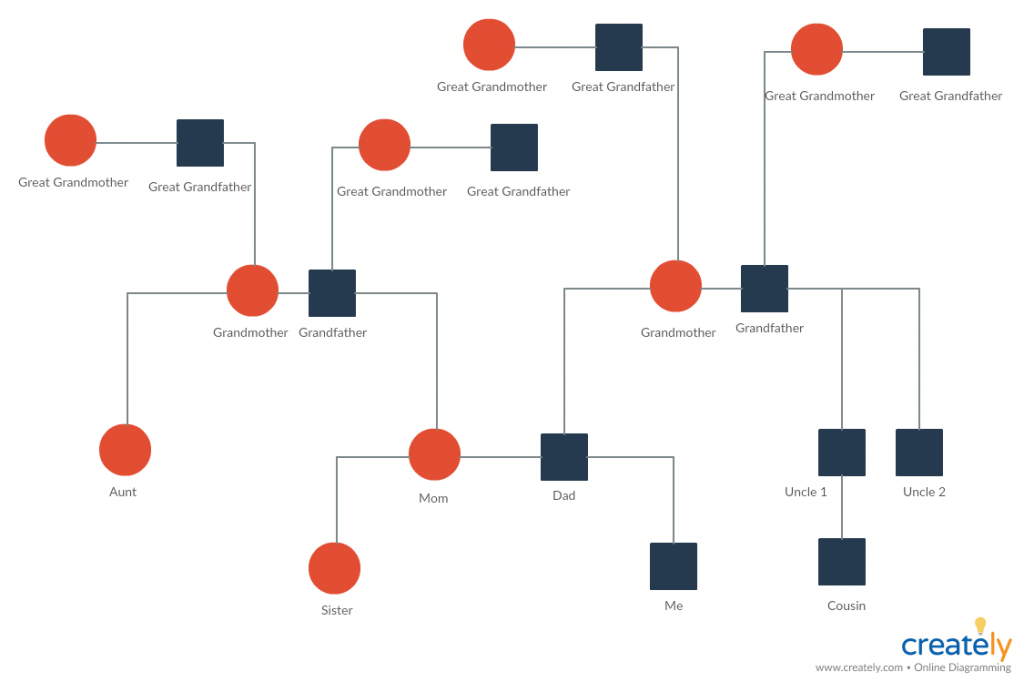
2. Emotional Genogram
Psychologists and therapists use emotional genograms to visualize emotional connections between family members. These diagrams help therapeutic assessment by illustrating relationship qualities such as conflicted, distant, close, or friendly dynamics. They can also identify abusive relationships, including mental, physical, and sexual abuse patterns.
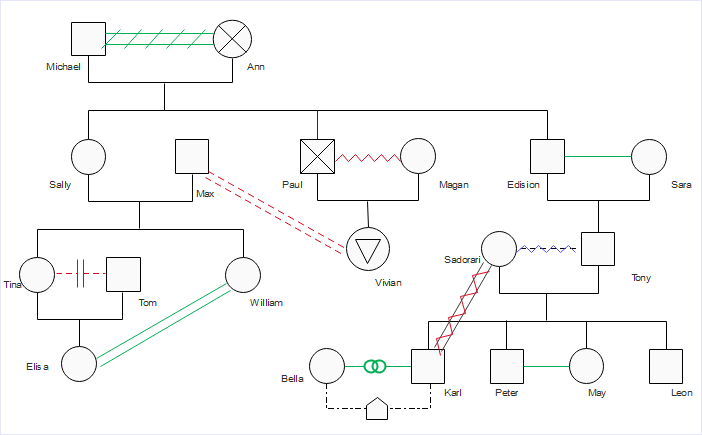
3. Relationship Genogram
While emotional genograms focus on feelings, relationship genograms document the formal connections between individuals using varied line styles. They represent marriage, committed relationships, casual relationships, and temporary connections, including divorce, separation, and cohabitation arrangements. These are particularly valuable in couples therapy and detailed family history documentation.
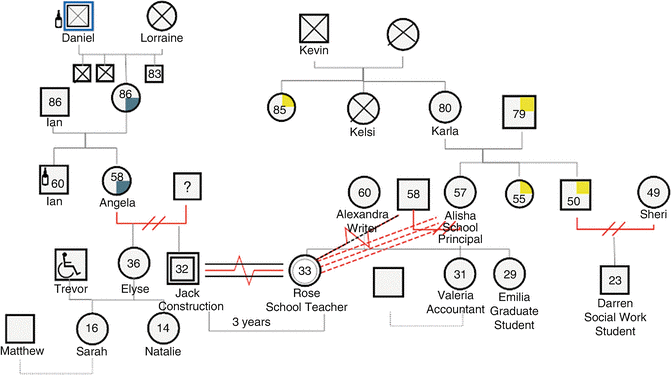
4. Medical Genogram
Medical genograms are among the most widely implemented types, specializing in tracking hereditary diseases and genetic carriers, particularly sex-linked conditions. They employ extensive symbol systems to document disease information, medical conditions, and lifespan data across generations.
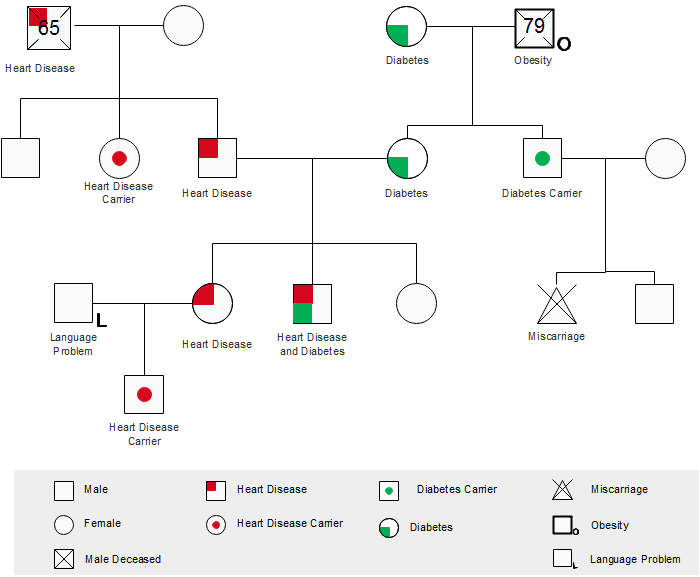
Part 5: Common Genogram Symbols
Different genogram types employ specialized symbols to convey specific information. Understanding these symbolic systems is essential for accurate interpretation:
1. Basic Symbols
Standard genograms use fundamental symbols to represent gender, age, and vital status. Squares denote males, circles represent females, and numbers with diagonal lines indicate lifespan. The following diagram illustrates the most commonly used basic genogram symbols.
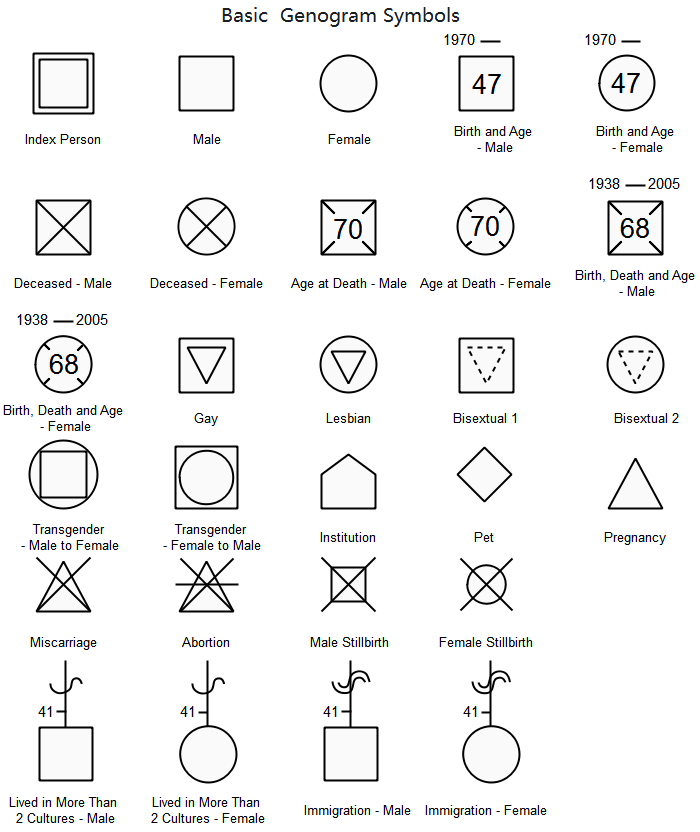
2. Medical Genogram Symbols
Medical genograms utilize color-coded symbols to represent specific health conditions. Heart disease is indicated by a red upper-right quadrant, diabetes by a green lower quadrant, and cancer by violet coloring. The following diagram demonstrates the color and orientation system for various medical conditions.
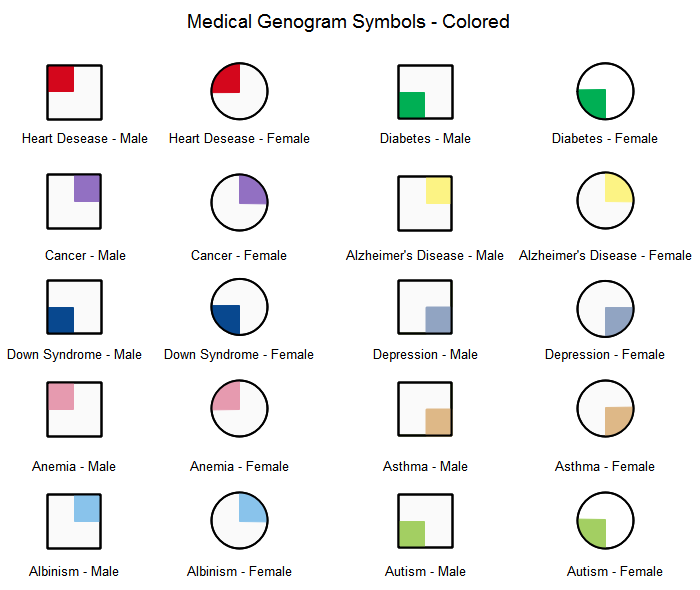
3. Relationship Symbols
Relationship genograms primarily use line styles rather than symbols to distinguish connection types. Solid, dashed, and dotted lines represent different relationship statuses, as demonstrated in the following visual guide to relationship representation.
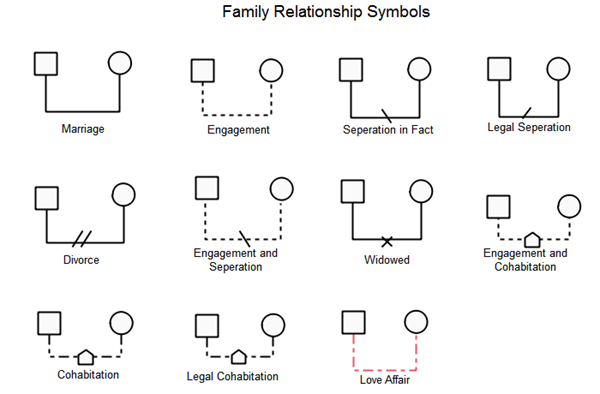
4. Emotional Symbols
Emotional genograms employ specialized symbols to categorize relationship qualities, ranging from close and friendly to hostile and abusive. The following symbols provide a standardized system for labeling emotional connections between individuals.
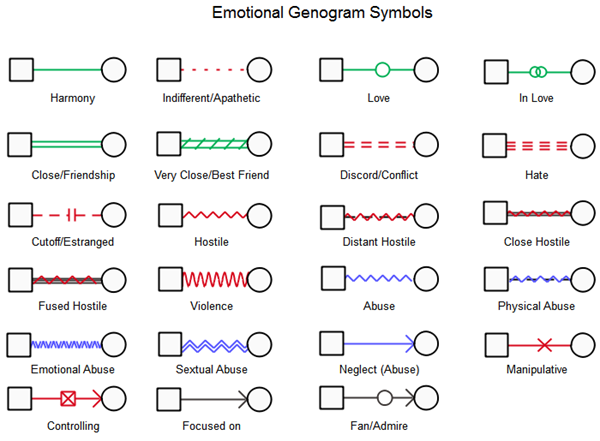
Part 6: How to Create and Use Genograms
Step 1: Select Genogram Type
Begin by determining the appropriate genogram type for your needs. Choose between emotional, relationship, medical, or simple family genograms based on your assessment objectives.
Step 2: Gather Information
Collect comprehensive data relevant to your genogram type. For medical genograms, compile detailed health histories. For relationship or emotional genograms, conduct individual interviews to gather accurate relationship data.
Step 3: Draw Appropriate Symbols
Select and draw symbols corresponding to gender, age, and status information. Remember to position male symbols on the left side according to standard genogram conventions.
Step 4: Connect Symbols
Link symbols using appropriate lines to represent marital status, emotional connections, and other relationships. Use solid or stylized lines with descriptive labels or include a key legend for clear interpretation.
EdrawMax
All-in-One Diagram Software
- Superior file compatibility: Import and export drawings to various file formats, such as Visio
- Cross-platform supported (Windows, Mac, Linux, Web, Android, iOS)
Part 7: Genogram vs. Family Tree
While genograms share structural similarities with family trees, they serve fundamentally different purposes. Family trees primarily document biological relationships and may include photographs for identification. Genograms, however, utilize standardized symbols to represent family members and their connections, providing detailed information about emotional dynamics, medical history, and relationship patterns that extend far beyond basic genealogy.
Part 8: Genogram Examples
These practical examples demonstrate genogram applications and can inspire your own creations. They showcase effective design approaches and organizational strategies for various genogram types.
Luke Skywalker Genogram
This Star Wars-themed genogram illustrates relationship dynamics among main characters, providing a comprehensive visual overview of emotional connections and family relationships within the narrative universe.
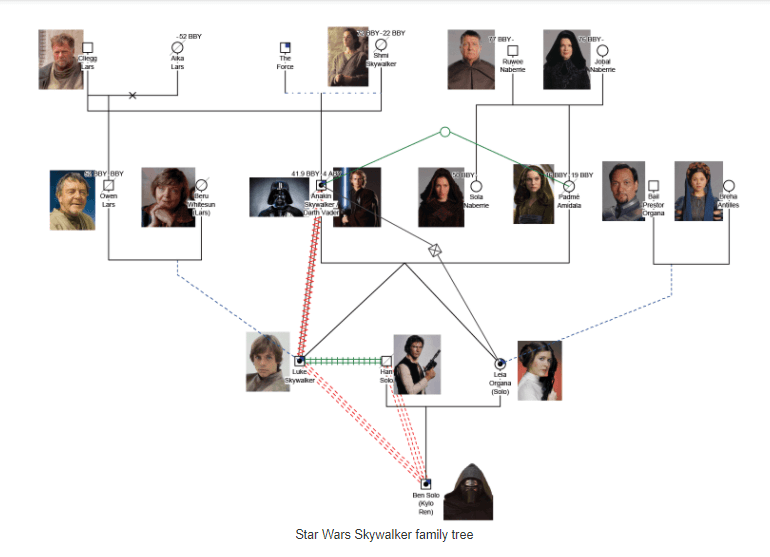
Down Syndrome Genogram
This medical genogram demonstrates genetic transmission patterns across three generations, identifying affected individuals, genetic carriers, and unaffected family members within a Down syndrome inheritance pattern.
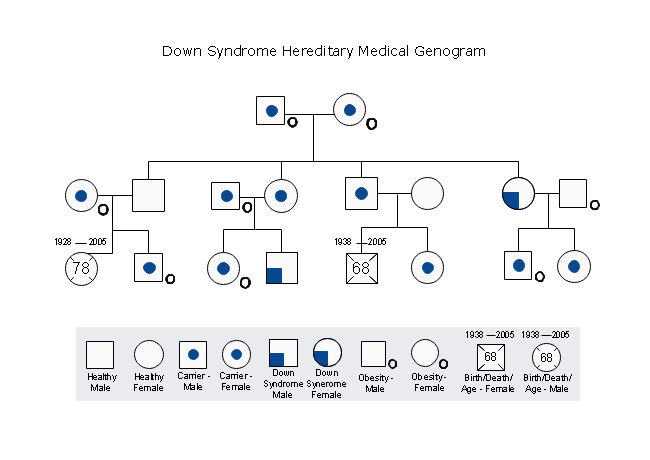
Further Reading:
Download Editable Genogram Templates
Part 9: Conclusion
In all truth genogram is a great tool for representing family trees with a lot more information. Hopefully, this article will help you understand how to read genograms and also create them. Try to create your genogram to get started, and you will soon understand that genograms are not only useful for clinical purposes but can also help your family come closer.




